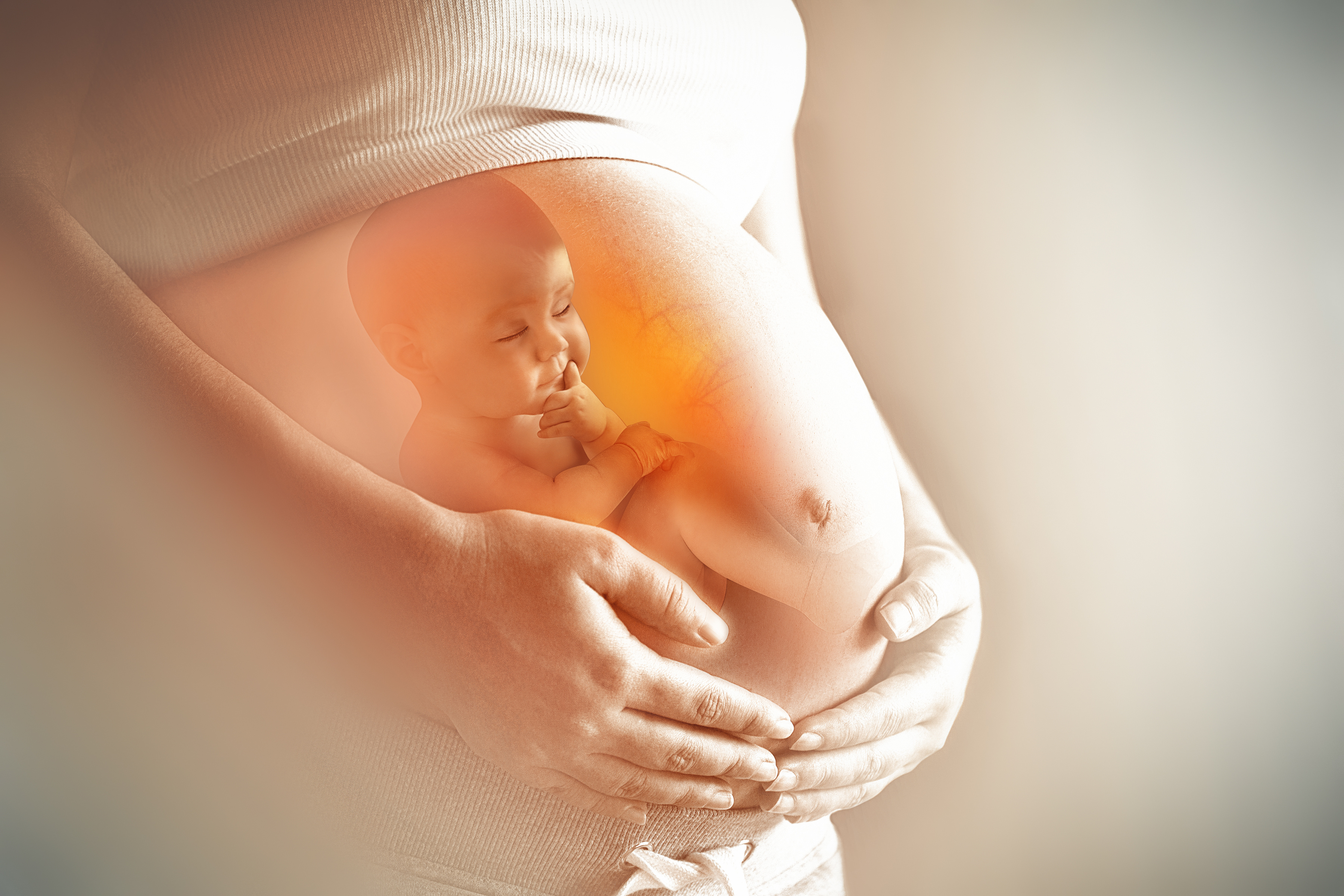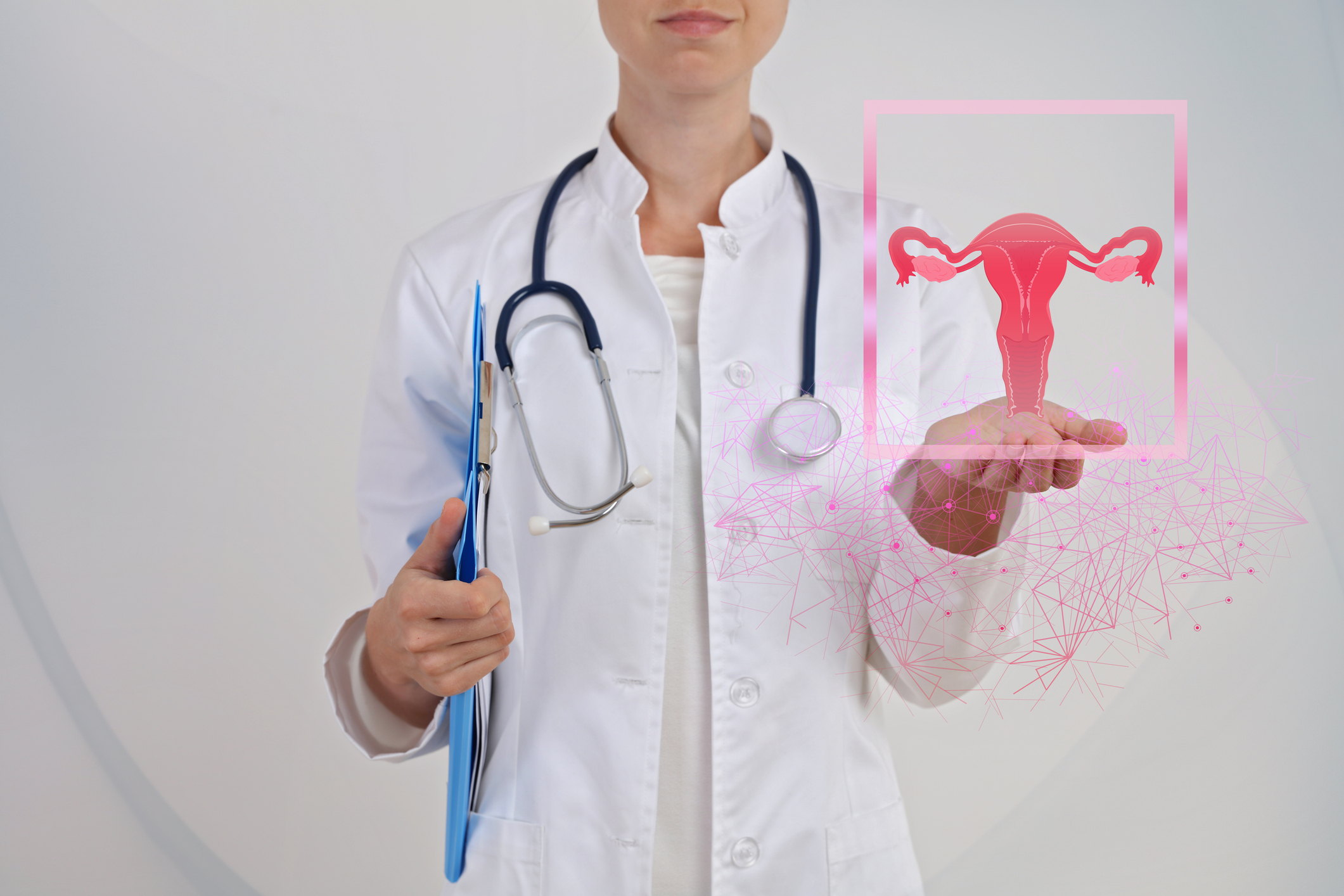 During pregnancy, maternal subclinical hypothyroidism may be associated with a higher risk of small for gestational age (SGA) status in newborns, as well as lower birthweight, whereas isolated hypothyroxinemia was associated with a lower risk of SGA and higher birthweight, according to a systematic review and meta-analysis published in The Lancet Diabetes & Endocrinology.
During pregnancy, maternal subclinical hypothyroidism may be associated with a higher risk of small for gestational age (SGA) status in newborns, as well as lower birthweight, whereas isolated hypothyroxinemia was associated with a lower risk of SGA and higher birthweight, according to a systematic review and meta-analysis published in The Lancet Diabetes & Endocrinology.
Researchers also found an inverse dose-response association between birthweight and maternal thyroid stimulating hormone (TSH) and normal free thyroxine (FT4) levels, the latter association being more evident during the second and third trimesters of pregnancy.
Arash Derakhshan, MD, of Erasmus University Medical Center, Rotterdam, The Netherlands, and colleagues wrote: “Thyroid hormone regulates fetal growth and development throughout gestation. Fetal thyroid hormone availability depends largely on the placental transfer of maternal thyroid hormone, particularly during the first 18-20 weeks of pregnancy. Overt maternal thyroid diseases such as hypothyroidism or (pre-existing) Graves’ hyperthyroidism are well known risk factors for SGA and occur in 0.2%-1.0% of pregnancies. Milder thyroid function test abnormalities such as subclinical hypothyroidism, isolated hypothyroxinemia, and subclinical hyperthyroidism occur up to ten times more frequently.”
Despite the importance of thyroid hormone, however, results from previous studies elucidating the associations between mild thyroid function abnormalities and SGA, as well as large for gestational age (LGA), have been inconsistent.
Therefore, Derakhshan and colleagues conducted this systematic review and individual-participant data meta-analysis. They searched MEDLINE (Ovid), Embase, Web of Science, the Cochrane Central Register of Controlled Trials, and Google Scholar, and identified 20 studies with data on maternal thyroid function and antibody status during pregnancy and birthweight, for a total population of 48,145 mother-child pairs (mean birthweight: 3,400 g; median gestational age at birth: 39.9 weeks). Main outcomes included SGA neonates, LGA neonates, and newborn birthweight.
Among these mother-child pairs, 3.1% had subclinical hypothyroidism — defined as increased thyroid stimulating hormone (TSH) and normal free thyroxine (FT4) — and 2.2% had isolated hypothyroxinemia — defined as decreased FT4 and normal TSH. In all, 4,771 (9.9%) neonates were born SGA, and 4,736 (9.8%) were LGA.
Maternal subclinical hypothyroidism was associated with a higher risk of SGA compared with euthyroidism (11.8% versus 10.0%, respectively; adjusted risk difference: 2.43%; 95% CI: 0.43-4.81; OR: 1.24; 95% CI: 1.04-1.48; P=0.015) and lower mean birthweight (mean difference: −38 g; 95% CI: −61 to −15; P=0.0015). Effect estimates for measurement were higher in the third trimester compared with the first or second trimesters.
Researchers also found that isolated hypothyroxinemia was associated with a lower risk of SGA compared with euthyroidism (7.3% vs 10.0%, respectively; adjusted risk difference: −2.91; 95% CI: −4.49 to −0.88; OR: 0.70; 95% CI: 0.55-0.91; P=0.0073) and higher mean birthweight (mean difference: 45 g; 95% CI: 18-73; P=0.0012).
Neither subclinical hyperthyroidism nor overt hyperthyroidism were associated with SGA or birthweight. Abnormalities in thyroid function testing also had no association with LGA.
For each single increase in standard deviation (SD) in maternal TSH concentration, Derakhshan and fellow researchers observed a 6 g lower birthweight (95% CI: −10 to −2; P=0.0030) and a higher risk of SGA (OR: 1.05; 95% CI: 1.01-1.08). Women who were thyroid peroxidase antibody positive had higher effect estimates compared with those who were negative (Pinteraction=0.10). The negative associations of TSH with birthweight stratified by maternal age were almost four times greater in women aged ≥ 30 years compared with those aged ˂ 30 years.
In addition, they found that each 1 SD increase in FT4 concentration was associated with a 21-g lower birthweight (95% CI: −25 to −17; P ˂ 0.0001), a higher risk of SGA (OR: 1.07; 95% CI: 1.04-1.11), and a lower risk of LGA (OR: 0.91; 95% CI: 0.88-0.94).
The association between FT4 and birthweight, however, differed according to gestational age at serum sampling (Pinteraction=0.0002). Effect estimates were two and three times larger when measured during the second (β: −22; 95% CI: −27 to −16) and third trimesters (β: −36; 95% CI: −46 to −26) compared with the first trimester (β: −13; 95% CI: −20 to −6). The negative effect estimated of the association of FT4 with birthweight was greater in women with a BMI of ≥ 30 kg/m2 compared with those with a BMI of 18 to ˂ 25 kg/m2.
Likewise, compared with birthweight measured in the first trimester (β: −20; 95% CI: −60 to 19), estimates of the association between subclinical hypothyroidism and birthweight were two times larger when measured in the second trimester (β: −33; 95% CI: −70 to 3) and five times larger in the third trimester (β: −75; 95% CI: −124 to −25).
Researchers also found a suggestion that the association between TSH and FT4 with birthweight differed according to thyroid peroxidase antibody status (Pinteraction=0.10 and 0.091, respectively).
Limitations of the study included interpretation of overt hyperthyroidism results due to less statistical power in this group and the absence of TSH receptor antibody concentration measurements. In addition, these results may have been affected by pregnancy-related changes in thyroid binding proteins causing potential interference with FT4 immunoassays. Five studies published during the completion of this study could not be included. Finally, due to the observational design of the study, residual and unmeasured confounding may have occurred.
In an accompanying editorial, Rima K. Dhillon-Smith, MBChB, PhD, of the Institute of Metabolism and Systems Research, University of Birmingham, UK, stressed the importance of the findings of Derakhshan and colleagues regarding FT4 levels.
“The identification of the correlation between maternal FT4 levels at the higher end of normal with low birthweight is an important finding. Babies born with low birthweight are more likely to have difficulties feeding, maintaining thermoregulation, and combating infection. The finding that the association of FT4 and low birthweight is most apparent during later pregnancy is another key message, which highlights the need for clinicians to continue monitoring thyroid function throughout pregnancy. Additionally, the finding of an increased birthweight in babies born to mothers with isolated hypothyroxinemia further supports the notion that FT4 levels have a key role in determining fetal growth.”
Both the study authors and the editorialist cautioned that these findings highlight the risks of overtreatment with levothyroxine in women with subclinical hypothyroidism.
“These results indicate a potential risk of overtreatment when titrating levothyroxine to high-normal FT4 concentrations and underlines the importance of follow-up thyroid function testing when levothyroxine therapy is started during early pregnancy,” according to Derakhshan et al.
Dhillon-Smith concurred: “In summary, this is a well conducted systematic review and meta-analysis on a clinically important and highly prevalent problem. It should prompt clinicians to be cautious with overenthusiastic prescription of levothyroxine to women with subclinical hypothyroidism and to include discussions on the risk of SGA in antenatal counselling,” concluded Dhillon-Smith.
-
Maternal subclinical hypothyroidism during pregnancy is a risk factor for delivering small for gestational age neonates and is associated with lower birthweight.
-
Higher FT4 concentrations, even within the normal range, were associated with lower birthweight.
E.C. Meszaros, Contributing Writer, BreakingMED™
Derakhshan and Dhillon-Smith have no disclosures.
This study was supported by a grant from the Netherlands Organization for Scientific Research.
Cat ID: 41
Topic ID: 83,41,730,110,41,192


